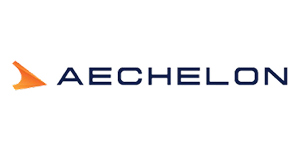
Download a PDF version of the 2025 NatSec100 Report
What Is The NatSec100?
Silicon Valley Defense Group, in partnership with J.P. Morgan, is proud to present the 2025 NatSec100. In its third year, this report identifies the top 100 venture-backed, dual-use and defense technology companies driving forward U.S. national security. These companies are not only advancing critical technologies, but also shaping the future contours of the U.S. defense innovation ecosystem. Our analysis yields key insights and recommendations for overcoming systemic barriers to innovation at scale.
-
The NatSec100 - Silicon Valley Defense Group’s ranking and analysis of the top 100 venture capital backed defense tech startups
-
Drive critical, pointed, and meaningful discourse on the state of the Defense Industrial Base (DIB) and National Security Innovation Base (NSIB)
Identify which companies are riding significant momentum
-
Momentum-based, quantitative methodology that is NOT valuation based
Rankings determined from publicly available information. Methodology enables company analysis in a comparable way, irrespective of sector, stage, product, etc.
I'm particularly excited about this year's NatSec100 release. We started SVDG ten years ago with a mandate from Senator McCain to build a bridge between Silicon Valley and DC. A decade later that bridge is being well travelled. Private capital and entrepreneurs are now working daily with policy makers and military leaders to build a new defense industrial base. Our democracy and our allies will be more secure as we enter a new long term geoeconomic competition.
James Cross
Founder & Board Member, Silicon Valley Defense Group
Co-Director of Private Investments, Managing Director, Franklin Templeton
This year’s report is not just a snapshot—it is a multi-year lens on the evolving momentum of the national security innovation base.
The NatSec100 is intended to provoke urgent, informed dialogue about the state of the Defense Industrial Base (DIB) and the wider National Security Innovation Base (NSIB). Recognizing that every ranking has its limitations, our aim is not to declare winners but to inspire meaningful dialogue.
Serious discussion is needed around who is delivering, where the system is showing promise, and where reforms are needed most.
In 2025, the American defense enterprise faces a defining inflection point. Great Power Competition has returned in force. On the battlefields of Ukraine, we are witnessing a revolution in military affairs—defined by low-cost, attritable, beyond-visual-line-of-sight drones and rapid iteration cycles that vastly outpace the Department of Defense’s traditional R&D tempo. Innovation is no longer optional; it is the front line.
In this emerging era of techno-security competition to develop and deploy advanced technologies, the margins for victory are razor-thin. Although the United States continues to lead the world in breakthrough technologies, the Department of Defense lags dangerously behind in adopting them. To maintain our strategic edge, we must do more than innovate—we must accelerate adoption at speed and scale.
By spotlighting the companies driving change, the NatSec100 aims to illuminate our innovation pipeline and inspire action. SVDG remains committed to strengthening the connective tissue between government, industry, and capital—because in this race, the future belongs to the fastest adapter.
Methodology Inputs
Momentum centric formula, including but not limited to:
Recent capital raised
Total capital raised
Recent headcount growth
Eligibility Requirements
Company must be venture or PE-backed and not publicly traded
Must not have been acquired by a public company
Must publicly demonstrate dual-use or defense applicability and relevance to national security
Must pass vetting for foreign ownership concerns by our counter intelligence partners
Key Points
This list is momentum-based, focusing on growth and traction rather than valuation
Methodology applied consistently over three years enabling reliable year-over-year comparisons
List is constrained by publicly available data, which remains a structural limitation across the sector
Despite data imperfections, list remains a fair, repeatable, and practical proxy for assessing growth.
Ranking is not a direct measure of operational impact, due to lack of consistent, publicly available U.S. Government contracting data
The value is in the comparative analysis across the 100 companies and the macro signals the list provides about the state of defense innovation
SVDG at 10 Years
Last Decade’s Focus
Innovation by Creation
This Decade’s Focus
Innovation by Adoption
Setting the Scene
The 2025 NatSec100 reveals a powerful reality: innovation is no longer defined solely by creation—it is now defined by adoption.
Over the past decade, the national security enterprise made meaningful progress in catalyzing a new wave of dual-use innovation, largely driven by private capital and startup ingenuity. But the next decade will be shaped by the government's ability to adopt, scale, and integrate these technologies into real-world missions. The companies in this year’s NatSec100 cohort are maturing, raising follow-on capital, and demonstrating growing operational impact.
At the same time, trends in contracting, workforce growth, and the rise of software-enabled capabilities in traditionally hardware-centric domains all point to an ecosystem ready for a new phase—where success hinges not just on invention, but on institutional uptake. The future of defense innovation will be determined not by what is possible, but by what is actually adopted.
In 2024, we saw a ~2.3x increase over prior year in DoD spend on NatSec100 companies. While encouraging, total spend consistently remains <1% of total DoD budget.
-
Note: For much of our analysis, we isolate SpaceX from datasets. While SpaceX meets the eligibility requirements and remains on the list, it operates at a scale beyond other companies in the NatSec100. With tens of billions in private funding and USG awards, including SpaceX in some comparative analysis obscures the challenges facing the broader innovation ecosystem. For that reason, we often present analysis with and without SpaceX, to preserve analytical clarity and ensure trends among the remaining 99 companies are visible and actionable.
2025 Key Takeaways
-
The 2025 NatSec100 cohort saw meaningful movement: new entrants, strategic exits, and companies rising or falling in ranking.
This churn signals real progress. The ecosystem is functioning—companies are scaling, raising capital, hiring talent, and in some cases, turning a profit. As dual-use technologies continue to mature, particularly in hardware-intensive sectors, the defense innovation base will require new financing models. Long-term success will depend not only on Wall Street’s capital markets but also on the broader support of Main Street—America’s industrial base, mutual funds, family offices, state and local governments – to ultimately deliver at scale.
-
DoD spending on NatSec100 companies more than doubled from 2023 to 2024 (~2.3x), totaling nearly $4B, or $1.95B excluding SpaceX.
While SVDG was thrilled to discover a ~2.3x YoY increase in DoD spend on 2025 NatSec100 companies, a significant investment mismatch remains. The USG has awarded $28B in total historical federal awards for this year’s NatSec100 companies. Comparatively, $70.1B in total private capital has been raised for the same companies. This gap must continue to close in order to incentivize continued development and investment. Continued progress depends on DoD's willingness to take on more innovation risk and “pick winners.” Picking winners means scaling firm fixed price contracting and large programs of record for non-traditional companies.
-
In USG acquisitions, most contracts are governed by the Federal Acquisition Regulation (FAR), a robust and comprehensive set of rules and procedures for acquiring goods and services. However, contracting officers can also utilize alternative legal authorities and procedures, often involving Other Transaction Agreements (OTAs) or other mechanisms outside the standard FAR framework, referred to as non-FAR contracts. Roughly 12% of FY24 USG awards to NatSec100 companies (excluding SpaceX) were via non-FAR contracts—representing a 2x increase over last year. 92% of all contracts were fixed-price.
The growing use of Other Transactions (OTs) underscores the limitations of traditional FAR-based procurement when engaging with non-traditional vendors. Despite years of calls to expand access to flexible contracting pathways, OT adoption has accelerated in recent years and gained meaningful traction — SVDG is not surprised that the increase in OTs coincides with a rise in total awards to NatSec100 companies. This trend presents a clear opportunity for acquisition leaders and lawmakers to institutionalize and scale the contracting mechanisms that are demonstrably accelerating innovation delivery.
-
Recent executive actions and pending legislation (e.g., FORGeD Act, SPEED Act) signal intent to transform acquisition processes and accelerate innovation adoption through significant structural changes.
SVDG is optimistic—but cautious. Past reform efforts often fell short. The key question now: Will DoD leadership continue empowering program managers and acquisition officials to sustain FY23–25’s growth in innovation investment?
Ensuring follow-through will be essential to building a defense acquisition system that’s fit for purpose in an era of strategic competition.
-
NatSec100 companies are not evenly distributed across the OUSD(R&E) list of 14 critical technology areas. The NatSec100 continues to be dominated by companies in AI, software, cyber, and space. Other priority tech areas, such as microelectronics, quantum, hypersonics, and directed energy—remain underrepresented.
This concentration presents both a challenge and an opportunity. SVDG routinely hears from private capital that stronger demand signaling is required in order to deploy new capital. While the Department of Defense has traditionally relied on startups for innovative software and primes for complex hardware, this bifurcation may no longer serve emerging mission needs. As national security challenges demand advanced capabilities in areas like quantum science and engineered biology, investment will increasingly be the key to unlocking their potential.
America and the World are at a critical crossroads: comprehensive Action and Leadership are imperative now... Protecting our country goes way beyond just the military and includes, among other items, grid security, data centers, communications and cybersecurity in general... We need to allow greater flexibility on the reallocation of money; i.e., to continuously innovate (buy the newest drones and other items).
Jamie Dimon
CEO, JPMorganChase
Chairman and CEO Letter to Shareholders, 2024 Annual Report
2025 NatSec100 Companies
Stats to Date
$28.6B
Total Federal Awards
Prime, Sub, OTA, SBIR/STTR
Up 18% from 2024
$25.8B
Federal Prime
$1.8B
$798M
Federal Subcontract
$199M
Federal SBIR Awards
Federal OTA
$70.1B
Total Private Capital Raised
Up 32% from 2024
8.3 years
Average Age of Company
$41.5B
Gap between Total Private Capital and Total Federal Awards
The
Companies
KEY - Capital Raised
$$$$$$$ — >$2B
$$$$$$ — $1B - $2B
$$$$$ — $750M - $1B
KEY - Capital Raised
$$$$$$$ — >$2B
$$$$$$ — $1B - $2B
$$$$$ — $750M - $1B
$$$$ — $500M - $750M
$$$ — $250M - $500M
$$ — $100M - $250M
$ — <$100M
$$$$ — $500M - $750M
$$$ — $250M - $500M
$$ — $100M - $250M
$ — <$100M
-
In June 2025, Open AI launched its OpenAI for Government initiative and promptly secured a $200 million “frontier AI” pilot with the Department of Defense, while Anthropic launched Claude Gov, its product designed specifically for U.S. defense and intelligence agencies. These collaborations signal a deeper operational engagement and commitment to mission-driven AI systems.
By the time these announcements were made, the eligibility list for the 2025 NatSec100 had already been finalized and therefore were not included for consideration this year.
The Data
Explore the analysis behind this year’s NatSec100 through different vantage points, including the data that informed the rankings.
Defense Tech at an Inflection Point
A Moment of Strategic Reckoning
The NatSec100 report — and the broader mission of the Silicon Valley Defense Group — emerged from a recognition that the U.S. defense enterprise needed to prepare to absorb a future inflection point. That moment has arrived. Today, the United States can no longer assume uncontested dominance over the global commons. Strategic competitors are advancing, battlefield conditions are evolving rapidly, and our defense acquisition system remains mired in a status quo built for a different era. We are navigating 21st-century threats with largely 20th-century tools, while existing tools, like OTAs or CSOs, are likely underutilized. Success will require improved use of existing toolboxes and the initiation of new acquisition mechanisms and reforms.
The Readiness Gap
America’s entrepreneurial technology ecosystem — particularly the dual-use venture-backed sector — is one of the country’s most powerful untapped assets. Yet the national security enterprise has not adapted to harness it fully and effectively. While promising technologies exist across autonomy, cyber, space, and advanced software, the systems for acquiring and scaling them remain slow, risk-averse, and misaligned with operational urgency. The result is a growing gap between what is technologically possible and what is tactically deployable. We must fix this readiness gap before it becomes a strategic vulnerability.
A Wake-Up Call from Ukraine
Recent events in Ukraine have underscored the dangers of delay in adapting to modern, asymmetric warfare. In a paradigm-shifting drone strike earlier this year, Ukrainian forces employed first-person view (FPV) drones deep into Russian territory, demonstrating not only bold operational tactics but also the disruptive potential of pairing commercial software with low-cost hardware. This form of asymmetric engagement enables drone units to deliver levels of lethality once reserved for armored brigades or close air support — at a fraction of the cost. According to the Ukrainian 92nd Assault Brigade, a $100M drone unit can execute 5,000 lethal strikes annually, bringing the per-strike cost to just $20,000. This level of efficiency and impact is unmatched by traditional U.S. defense systems and illustrates how asymmetric technologies are redefining battlefield dominance.
The Next Revolution in Military Affairs
These developments may mark the beginning of a new revolution in military affairs — one defined not by new exquisite platforms or decades-long procurement cycles, but by the rapid iteration of commercial tech, highlighted in the proliferation of attritable, low cost, high impact, autonomous systems. The Ukraine case exemplifies a future in which software-defined, networked, and decentralized systems dominate the battlefield. If the U.S. does not reengineer its acquisition, development, and deployment models to match this pace, it risks falling behind both allies and adversaries.
Recommendations
This shift from invention to implementation demands a recalibration of effort. The focus must move beyond experimentation and prototyping and toward contracting, fielding, and sustainment. Simply put: energy, attention, and political capital must now be invested in buying innovation, not just finding it.
Over the past several years, the Department of Defense has made significant strides in recognizing the importance of non-traditional defense technology. Today, efforts are being made at streamlining innovation pathways. The data reflects such, as seen below.
However, SVDG concludes that innovation alone is not enough. What matters most is innovation adoption—it is time for the U.S. government to move past a focus on identification of promising technologies, and to deploy technologies at scale in mission-relevant contexts. Our adversaries don’t differentiate between “defense innovation” and “defense.” Nor should we. We must adopt this mindset.
This shift from invention to implementation demands a recalibration of effort. The focus must move beyond experimentation and prototyping and toward contracting, fielding, and sustainment. Simply put: energy, attention, and political capital must now be invested in buying innovation, not just finding it.
Several potential risks could result in ecosystem failure:
Momentum Shift
Gap between private and public investment widens, capital deployment is halted by lack of company success stories, and ecosystem growth into next phase of maturity is stunted.
Diverted Attention
World events and domestic politics distract leadership from the intentionality, creativity, and risk taking required to enable innovation adoption.
Degradation of Mission Impact
Warfighters not equipped with required tools due to bureaucratic inertia, siloed development efforts (abroad and domestically), and lack of adoption at scale.
-
Refocus OSD and Service innovation organizations on scaling and adoption over invention and innovation.
Redirect energy and resources to accelerating deployment, ensuring recent tech investments result in fielded capabilities.
-
Expand use of fixed-price award fee contracts tailored to commercial software firms, enabling scalable licensing and performance-driven growth.
Normalize use of the Software Acquisition Pathway (SWP) to treat software-first firms as primes, with hardware in support roles.
-
Encourage adoption models outside traditional PoRs (e.g., direct-to-requirement contracting) but ensure these are supported by pathways to real-world deployment.
Reward follow-through and institutional commitment—not just experimentation.
-
OSD, SCO, and Services must clarify high-priority capability needs and concrete pathways to adoption—not just exploratory tech interests.
Align government communication with investor expectations to unlock private capital already on the sidelines.
-
Help normalize dual-use defense tech by educating and engaging public equities analysts and institutional investors.
Pivot from targeting one-off deals to courting long-term market support for defense tech as a maturing asset class.
-
Build joint investment and development pathways with allied nations to mutually reinforce innovation ecosystems.
Expand joint programming, shared test infrastructure, and capital exchange models.
-
Develop and publicly share performance scorecards for Program Executive Offices (PEOs) to track and reward mission-driven innovation adoption.
Use outcome-based metrics to drive cultural change around risk, experimentation, and return on investment.
Recommendations for the Next 12–36 Months to Enable NatSec100 Companies to Flourish
The success of U.S. defense innovation will ultimately be measured not by the volume of novel tech being funded in incubation cells, but by what is operational, fielded, and mission-relevant. In the coming years, the real differentiator will be how well government systems evolve to buy, adopt, and scale what the innovation base is already building.
Acknowledgements
J.P. Morgan, our NatSec100 title sponsor, has been a steadfast and visionary partner to the mission of Silicon Valley Defense Group. Special thanks to Rhett Jeppson, Jeff Balka, Joshua Pacheco, and Courtney Katz.
Booz Allen Hamilton Ventures, including Brian MacCarthy and Ryan Nelson, for your strategic insight, thought partnership, and support of this year’s report.
Balyasny Asset Management and Franklin Templeton Ventures, and in particular James Cross, Jamie McGurk, and Dylaan Cornish for your partnership over the past three years in building the data infrastructure that powers this report—from algorithm development and data analytics to validation and refinement.
Founding and former SVDG Executive Directors Sam Gray and Jacqueline Tame, whose bold leadership launched the NatSec100 and transformed an idea into a movement.
Dylan Serrentino-Mullins, SVDG’s NatSec100 Fellow, for his unwavering commitment and thoughtful guidance in helping shape this report to the highest standard.
Chris Donaghey, SVDG Executive Board Chairman, for his guidance, leadership and vision.
Dayton Segard and Winifred Wright from The Book Club, our exceptional design and web development partners, for bringing the storytelling and visual identity of the NatSec100 to life with creativity and care.
And finally, to the core SVDG team: Emily McMahan, Simone Montadon, and Kyra Miklos — thank you for your relentless energy, thoughtful execution, and unwavering dedication. This report is the result of your deep expertise and grit.
About
Silicon Valley Defense Group (SVDG)
The Silicon Valley Defense Group (SVDG) is a non-profit organization dedicated to accelerating national security innovation by bridging the gap between emerging technology, private capital, and the U.S. government. We convene industry, policymakers, and mission stakeholders to foster collaboration, surface new pathways for fielding critical technology, and support a resilient, distributed, and modern defense industrial base.
From policy dinners and executive roundtables to research reports and initiatives like the NatSec100, SVDG operates at the intersection of innovation and national defense—driving impact where it’s needed most.
Get Involved
Join SVDG’s Industry
Council as a sponsor
to support SVDG’s role in shaping ecosystem conversations.
Attend our
public events
to collaborate with other mission-driven leaders across tech, capital, and national security.
Reach out to us
directly at svdg@siliconvalleydefense.org
Stay informed
and sign up for our newsletter at siliconvalleydefense.org/newsletter










































































































